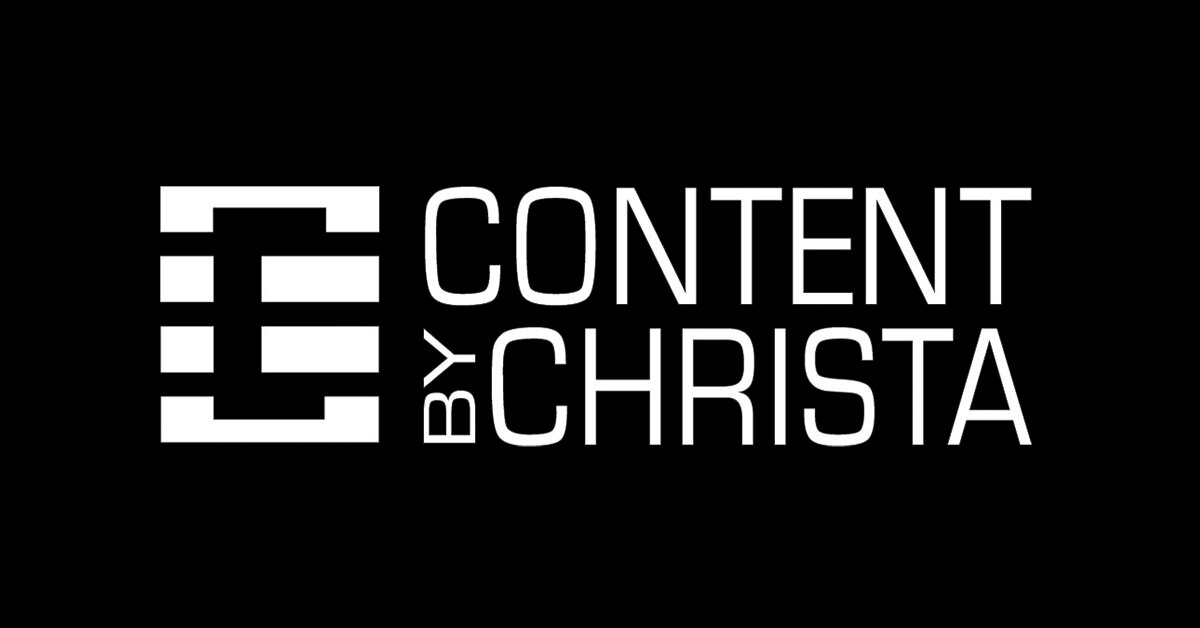How to Optimize Your Contact Page for Higher Conversions: Tips for Businesses of All Sizes
If you’re a business owner — whether you’re running a startup in a small town or managing a global enterprise — you know the importance of making a strong first impression. When it comes to your website, that first impression often happens on your contact page (or “Book a Demo” page, if you’re in the SaaS game).
But here’s the thing: a lot of business owners overlook this page when investing in website strategy optimization, thinking it’s just a necessary evil to have a contact form or email address. In reality, this page is one of the most powerful conversion tools on your site — but only when optimized correctly.
At Content by Christa, our content marketing services help businesses turn their websites into conversion magnets. And one of the easiest ways to boost your site’s performance is by optimizing your contact page.
Ready to turn your contact form from a dead zone to a lead-generating powerhouse? Let’s dive into how to do that.
The Role of the Contact Page: Your First (and Last) Impression
Think of your contact page as the final handshake you offer to your website visitors. It’s the moment when potential customers are deciding whether to take the leap or bounce off your site and seek out the competition. So why let this key moment be a missed opportunity?
Your contact page should be more than just a place to “submit a request.” It should make it easy for visitors to reach out, feel confident in your brand, and want to engage with you. For small businesses, this is especially important since you’re building trust from scratch.
But for larger businesses, the same principles apply — except now, you have to keep the bar high for a global audience that has many options. So, what can you do to make this page stand out?
Crafting Specific Messaging: Make It Crystal Clear
We’ve all been there — clicked on a “Contact Us” page only to see something vague like, “Reach out to us with any inquiries.” It’s about as exciting as a plain, dry cracker. Your contact page messaging should be clear, compelling, and resonate with your audience’s needs.
Here’s the secret: make your messaging specific to the user’s intent. If someone lands on your site looking for a demo, don’t just have a generic “Contact Us” headline. Instead, have something like, “Ready to See [Your Product] in Action? Book Your Free Demo Here.” Not only does this clarify the user’s next steps, but it also makes them feel like you're speaking directly to their needs.
And here’s a pro tip: add urgency or empathy into your copy. “Get Help Fast” or “We’re Here to Solve Your [Problem] Today” works wonders for giving people the confidence that you’re there when they need you most.
Personalization: Make It Feel Like a One-on-One Conversation
Let’s be honest — nobody likes filling out generic forms or speaking to an anonymous email address. If you want your visitors to feel comfortable reaching out, personalize the experience. Personalization isn’t just a buzzword — it’s a psychological hack that builds trust and humanizes your business.
Add a headshot of the person who will be responding, include their name and title, and let them know what kind of response time they can expect. You can even add something like, “Our [Role Name], [Name], is ready to chat with you and will respond within 24 hours.” It’s that simple.
Personalization goes beyond names — take it a step further with behavior-based content. If someone browsed your product page before heading to the contact page, tailor the message with something like, “Got Questions About [Product]? We’re Here to Help!” This type of content customization makes visitors feel like they’re getting the VIP treatment.
Streamline Your Form
We’ve all abandoned forms that seem to go on forever and ask for information we know they don’t really need. Sound familiar?
To boost conversions, keep your contact form simple. Stick to the essentials: name, email, and message — that’s all you really need for initial contact. Bonus points if you use auto-fill features to save your visitors time.
But what about getting more info to better vet your leads, like knowing their budget for a home remodeling project or what specific therapy services they’re interested in? Keep it simple and user-friendly: Use self-selection fields.
These are optional questions that allow visitors to tell you more about their needs (without feeling overwhelmed). For example, if you’re a contractor, ask, “What’s your budget range?” If you’re a psychologist, let visitors select the type of therapy services they’re interested in.
And, of course, don’t forget mobile optimization. With so many visitors browsing on their phones, your form needs to work smoothly across devices.
For an extra edge, try Progressive Disclosure — this shows only the essential fields (like name and email) at first, and reveals additional fields based on user input. It’s like a friendly “hello” before asking for the details. Simple, easy, and effective.
Highlight Client Success: Let Your Results Speak for Themselves
When you’re asking for a visitor’s time and attention, you’d better back it up with some proof. One of the best ways to do this is by showcasing client success and social proof.
Show off some of your best testimonials, case studies, or even logos of well-known clients to establish credibility. This not only gives potential leads confidence in your brand but also helps them visualize the success they’ll have with your product or service.
Social proof — like glowing reviews or real-time stats — shows visitors that others trust you, encouraging them to do the same.
Want to make a bigger impact? Add interactive elements, such as a testimonial carousel or video case studies. These keep visitors engaged longer, which can boost conversions.
Provide Helpful Resources: Pre-Qualify and Educate
A well-optimized contact page doesn’t just ask for conversions — it also educates and pre-qualifies leads. The last thing you want is for a potential customer to reach out with an inquiry that could’ve been solved by a simple FAQ or product page.
Link to your most relevant resources right on the contact page. If someone is considering a purchase, direct them to a product guide, a video tutorial, or a blog post that answers common questions. This provides value upfront and helps your visitors feel more confident before they hit submit.
The key is to anticipate their needs. If someone’s interested in booking a demo, maybe provide a link to a “What to Expect” page or FAQ for demos.
Embrace AI and Automation: Speed and Efficiency
Speed is crucial. And in 2025, AI is your best friend. Whether it’s an AI-powered chatbot that responds to questions in real time or automation tools that schedule demos for you, technology can help increase conversions by providing instant responses.
In addition to chatbots, consider AI-powered lead scoring. This allows you to prioritize high-quality leads based on their engagement with your site. So, if someone’s spent a lot of time on your product pages or downloaded a case study, your team can follow up with them first.
Automation reduces response time, and when combined with personalized experiences, it makes visitors feel like they’re getting immediate, tailored attention.
RELATED: Q&A with Founder, Christa M. Thomas
Don’t Just Get Leads — Convert Them
If you want to maximize conversions on your contact or “Book a Demo” page, there are a few must-have strategies: specific messaging, personalization, streamlined forms, social proof, valuable resources, and smart use of AI. The magic happens when you take the time to fine-tune every detail and anticipate what your visitors need.
At Content by Christa, we know that optimizing your contact page is just the beginning. We’ve helped countless business owners turn their websites into conversion machines, and we’re here to do the same for you.
Start with these tips, monitor your results, and tweak as you go. Your contact page isn’t just a place to “reach out,” it's your business’s gateway to more leads, more conversions, and more long-term success.




